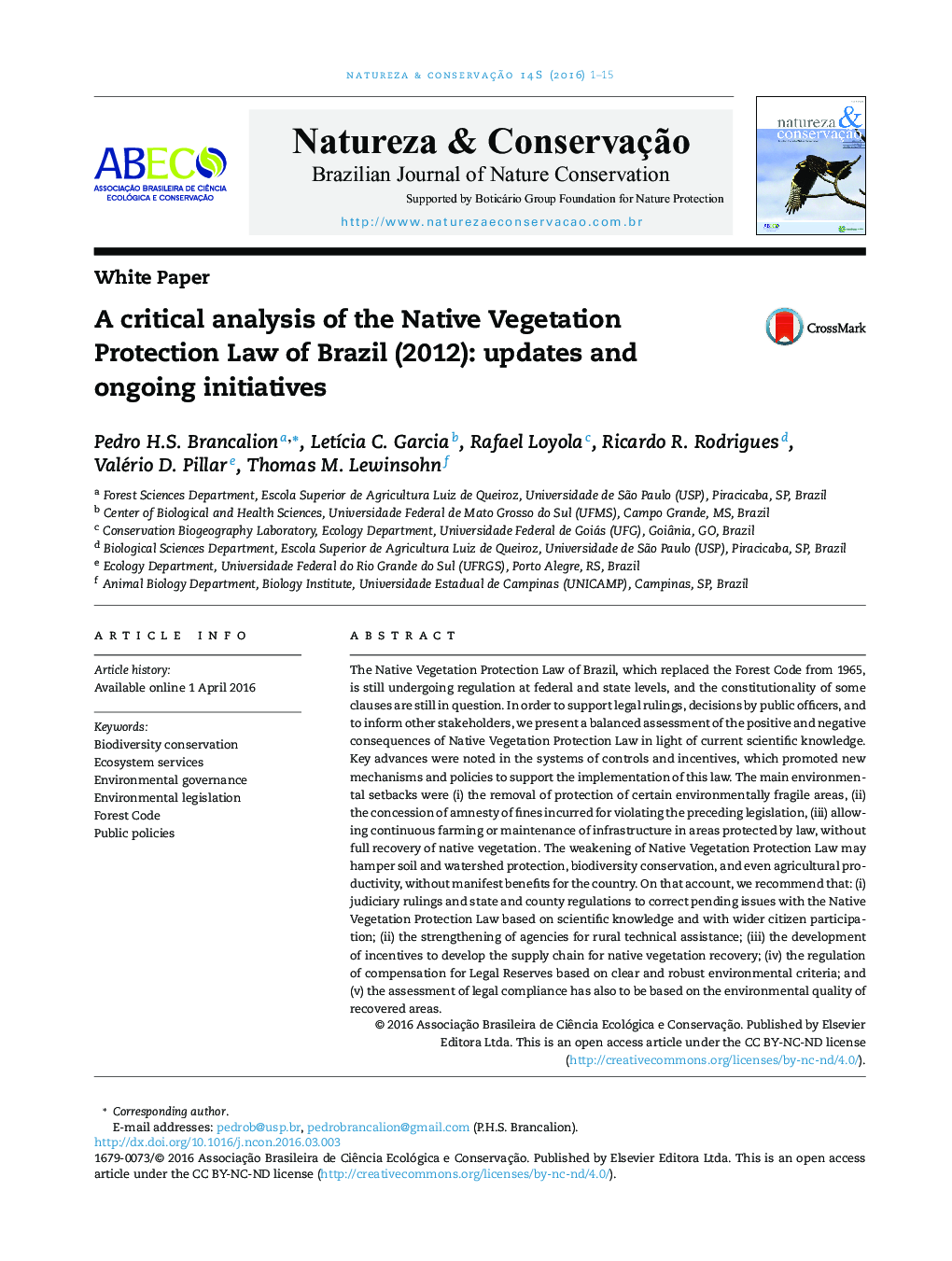| Article ID | Journal | Published Year | Pages | File Type |
|---|---|---|---|---|
| 4400862 | Natureza & Conservação | 2016 | 15 Pages |
The Native Vegetation Protection Law of Brazil, which replaced the Forest Code from 1965, is still undergoing regulation at federal and state levels, and the constitutionality of some clauses are still in question. In order to support legal rulings, decisions by public officers, and to inform other stakeholders, we present a balanced assessment of the positive and negative consequences of Native Vegetation Protection Law in light of current scientific knowledge. Key advances were noted in the systems of controls and incentives, which promoted new mechanisms and policies to support the implementation of this law. The main environmental setbacks were (i) the removal of protection of certain environmentally fragile areas, (ii) the concession of amnesty of fines incurred for violating the preceding legislation, (iii) allowing continuous farming or maintenance of infrastructure in areas protected by law, without full recovery of native vegetation. The weakening of Native Vegetation Protection Law may hamper soil and watershed protection, biodiversity conservation, and even agricultural productivity, without manifest benefits for the country. On that account, we recommend that: (i) judiciary rulings and state and county regulations to correct pending issues with the Native Vegetation Protection Law based on scientific knowledge and with wider citizen participation; (ii) the strengthening of agencies for rural technical assistance; (iii) the development of incentives to develop the supply chain for native vegetation recovery; (iv) the regulation of compensation for Legal Reserves based on clear and robust environmental criteria; and (v) the assessment of legal compliance has also to be based on the environmental quality of recovered areas.
